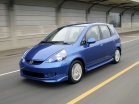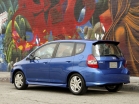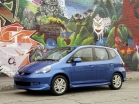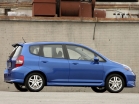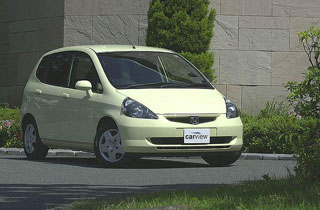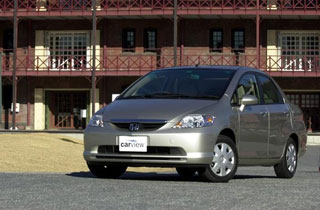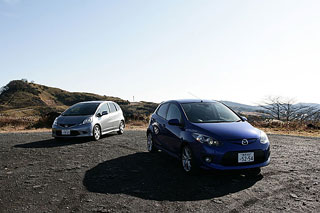Honda Fit 2006 test drive - 2008
Review of the new generation of the Honda Fit CD.
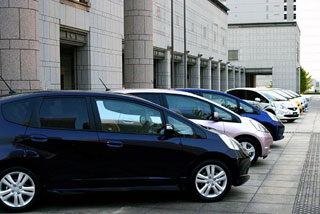 The difference between the machine of the old and the new generation can be felt almost immediately
The difference between the machine of the old and the new generation can be felt almost immediately It is generally accepted that the previous Honda Fit model, despite all its advantages, still remained somewhat unfinished. Nevertheless, the demand for it continued to continue and continues to remain quite high. What is the reason? I dare not insist, but, in my opinion, its design plays a significant role here, which liked both the male and female part of the drivers. In this situation, it was unlikely that it was worth expecting that, working on a new generation machine, the developers will decide to significantly change its appearance. So it happened.
But if there is a continuity of style, then in order to understand what a new car really appeared in the new car, it will be more correct to use the comparison method, right? So, may those readers who are little familiar with the first -generation FIT car will forgive me, but in the future I will constantly look back to compare everything that happened to.
I will make a reservation right away: I managed to check both varieties of a new generation FIT car: a model with an engine of 1,300 cm3 and with a 1.5-liter engine. Moreover, in the name of the second model there is an abbreviation RS, which, as you understand, indicates that a machine with some sports orientation.
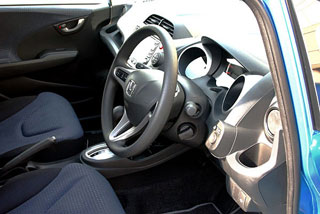 Of these two varieties, as you know, a machine with a lower cubacy engine, that is, with the volume of cylinders of 1.3 liters, will be used in great demand. That's what I decided to start with her. Once behind the wheel, I immediately began to get comfortable, driving both a driver's chair and a steering wheel for myself. It was not difficult to achieve the desired positive result, since the steering column was regulated both by inclination and length according to the principle of the telescope. So, it is not convenient to sit in his chair to the driver of great labor, this already speaks of the class of the car.
Of these two varieties, as you know, a machine with a lower cubacy engine, that is, with the volume of cylinders of 1.3 liters, will be used in great demand. That's what I decided to start with her. Once behind the wheel, I immediately began to get comfortable, driving both a driver's chair and a steering wheel for myself. It was not difficult to achieve the desired positive result, since the steering column was regulated both by inclination and length according to the principle of the telescope. So, it is not convenient to sit in his chair to the driver of great labor, this already speaks of the class of the car. Well, it's time to start the engine. In the launch operation, there are no features, as at the wheel of Honda Fit of the previous generation. The engine starts to work, and so yes! I do not feel his vibration at all. I try to slightly increase the load, for which I turn on the air conditioner, expecting it to somehow affect the behavior of the engine. It didn’t happen, the only thing I felt was the fan rumble. As for the increased vibration laid in such cases again nothing. That is, if not for the fan, I would have thought that the air conditioner did not work at all. Okay, I take the transmission control lever (CVT is a unacceptable variator), transfer it to position D, believing that now I will probably feel the enhanced vibration. And once again I am mistaken!
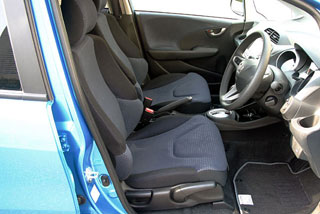 Yes, of course, the power transmission in the new car is carried out through the hydrotransformer, which was not there earlier, I know that. But I also know that the vibration of the idle in the previous model was due to turning off the chassis (front -line couplings). And in this regard, everything remained unchanged: while the car is standing, the coupling is in a turn off so as not to strain the transformer once again. Nevertheless, the fact remains: there is no idle vibration in the new FIT car, and where it went, probably only designers are known!
Yes, of course, the power transmission in the new car is carried out through the hydrotransformer, which was not there earlier, I know that. But I also know that the vibration of the idle in the previous model was due to turning off the chassis (front -line couplings). And in this regard, everything remained unchanged: while the car is standing, the coupling is in a turn off so as not to strain the transformer once again. Nevertheless, the fact remains: there is no idle vibration in the new FIT car, and where it went, probably only designers are known! True, it should be borne in mind that in the car there is an inclination sensor that, under certain conditions, does not allow the clutch to turn off. In other words, if at the time of the start of the movement the machine is horizontally or in front (on the descent), then the power transmission is disconnected. But if she starts off, standing on the rise, then the wheels grab right away, and the car begins to crawl forward. I know this for sure, because I myself checked.
It is known that some cars are arranged in such a way that you just have to drive a couple of meters on it, and you already understand what is its pros, and what are the minuses. So, I dare to say that the new Honda Fit is just one of these machines. Well, if so, then those drivers who had to drive a lot on the old car are enough, I think, two minutes to feel how the previous Fit model differs from the new one in practice.
Why did it be decided to abandon the I-DSI engine?
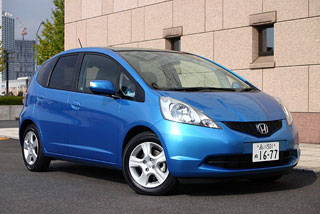 I will try to list the advantages of the car that I immediately paid attention to, and which give me reason to say: the new Fit, figuratively speaking, went beyond the scope of my class. So: the ability to calmly move off, a smooth steering wheel, an accurate engine reaction to the slightest change in the gas pedal, a light brake pedal, narrow (20 mm) front racks that almost do not interfere with the front review (it should be noted that the front triangular windows according to The areas increased three times), well, and so on.
I will try to list the advantages of the car that I immediately paid attention to, and which give me reason to say: the new Fit, figuratively speaking, went beyond the scope of my class. So: the ability to calmly move off, a smooth steering wheel, an accurate engine reaction to the slightest change in the gas pedal, a light brake pedal, narrow (20 mm) front racks that almost do not interfere with the front review (it should be noted that the front triangular windows according to The areas increased three times), well, and so on. The car engine works surprisingly smoothly. Meanwhile, this is not the same motor (type I-DSI), which was used in the cars of the previous generation. No, when working on a new generation of I-DSI, it was decided to refuse in favor of the I-VTEC system. How was I-DSI type engine characterized? 2-valve system inlet/release + contactless electronic ignition system. Now, the working volume of the cylinders remained the same (1.3 liters), and the number of valves doubled (4 at each cylinder). While the motor holds small turns, the I-VTEC system significantly limits the operation of one of two inlet valves. A powerful twist occurs, which achieves a more complete combustion of fuel. Along the way, it should be noted that the injector injects through two points, the injection volumes are correlated as 4: 6. But the speed of movement increases, and, accordingly, the load on the engine grows. In this case, both intake valves are included in the work, the gas distribution mechanism is transferred to the forced mode, the injected fuel mixture is swirling, and as a result, a kind of compromise is established between the developed power and the amount of fuel burned while.
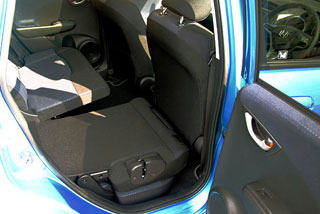 Why was it decided to abandon the I-DSI engine? After all, it is still unknown how the market fate of the first -generation Fit car has developed, and it would become so popular if it had not been equipped with this engine with the legitimate pride of Honda engineers. And suddenly, after such grandiose success, it turns out that without it is better! I asked the company's corresponding question, and this is what he answered me. Yes, he said, I must agree, in a sense, the I-DSI system rendered a good service to the machine. However, when the car began to be exported abroad, it turned out that many people do not share our enthusiasm for economy, and instead they wish the car to be more powerful. For our part, we could not ignore the opinion that, they say, in terms of the explicit characteristics, the car has spaces, so we decided: no, from now on only 4 valves, and no less!.
Why was it decided to abandon the I-DSI engine? After all, it is still unknown how the market fate of the first -generation Fit car has developed, and it would become so popular if it had not been equipped with this engine with the legitimate pride of Honda engineers. And suddenly, after such grandiose success, it turns out that without it is better! I asked the company's corresponding question, and this is what he answered me. Yes, he said, I must agree, in a sense, the I-DSI system rendered a good service to the machine. However, when the car began to be exported abroad, it turned out that many people do not share our enthusiasm for economy, and instead they wish the car to be more powerful. For our part, we could not ignore the opinion that, they say, in terms of the explicit characteristics, the car has spaces, so we decided: no, from now on only 4 valves, and no less!. Well, to say that the Fit car was powerful enough, I can’t have something, that is. But to express discontent about this for me is at least strange. Moreover, the improvement of the speed characteristics of the engine should, in theory, negatively affect economy. Isn't that an concern? I was answered as follows: indeed, we had to do everything possible to get the FIT of the same fuel consumption from the new engine that it was before. To do this, we tried to reduce the internal friction losses, as well as enter a complex system of disconnecting part of the intake valves at low speeds. And we ultimately managed to increase the engine power by 20 hp, and at the same time make the machine more economical. To this, probably, it must be added that the largest torque, in terms of a liter of working volume, has already reached 10 kg-m, which greatly simplified the operation of the engine, including at low speeds.
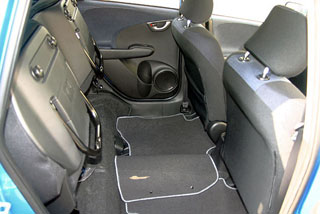 Meanwhile, comparing the craving of an old and new generation car is still not entirely correct. And all because in the first case, the unacceptable variator was with a special starting coupling (a multi -disc clutch of a wet type, which stood behind the belt transmission), then in the new FIT model the preference is given to the variator, which includes the hydrotransformer.
Meanwhile, comparing the craving of an old and new generation car is still not entirely correct. And all because in the first case, the unacceptable variator was with a special starting coupling (a multi -disc clutch of a wet type, which stood behind the belt transmission), then in the new FIT model the preference is given to the variator, which includes the hydrotransformer. The starting coupling, by the way, had many advantages. Nevertheless, she gave way to the guidrotransformer. Of course, one cannot deny the fact that it is easier to move with a transformer when the car is on the rise: the wheels immediately pick up the car, and it begins to crawl forward. And the starting clutch did not grab immediately, and therefore there was always the possibility that while the driver would transfer his leg from the brake to the gas, his car would roll back. But whether this argument outweighs all the arguments for the starting coupling, this is the question.
At low and medium speed, the steering wheel of the car acts just wonderful
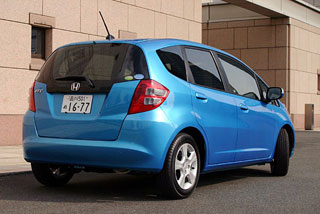 Let's see how the developers themselves determine the reason for the transition to power transfer with the participation of the hydrotransformer. Let me quote the words spoken by one of the representatives of the company. We, he began, of course, knew that the starting clutch is good. However, a clear task was set to convey to the wheels a large torque in the initial stage of movement. Hence the changes. See: not only did the wheel immediately grab the car at the time of the start of the wheel, it was also possible to get by with a small gear ratio in the main gear, even despite the fact that the engine is blocked with a transmission at an earlier stage. And this, in turn, made it possible to reduce the internal losses of the unaccounted variator (the so -called losses for belt gear or Belt Loss). And in the end, firstly, the thrust improved, and secondly, it was possible to achieve fuel savings.
Let's see how the developers themselves determine the reason for the transition to power transfer with the participation of the hydrotransformer. Let me quote the words spoken by one of the representatives of the company. We, he began, of course, knew that the starting clutch is good. However, a clear task was set to convey to the wheels a large torque in the initial stage of movement. Hence the changes. See: not only did the wheel immediately grab the car at the time of the start of the wheel, it was also possible to get by with a small gear ratio in the main gear, even despite the fact that the engine is blocked with a transmission at an earlier stage. And this, in turn, made it possible to reduce the internal losses of the unaccounted variator (the so -called losses for belt gear or Belt Loss). And in the end, firstly, the thrust improved, and secondly, it was possible to achieve fuel savings. The advantages of the hydrotransformer are not only that it allows you to vary the transmission of the rotating moment in a wider range at the initial stage of movement. In addition, he is able to quickly give the car additional acceleration, when the speed is already large enough. Therefore, in terms of practical driving, the value of the machine only increases, and without a significant deterioration in economic indicators. And the fact that the engine blocking with the transmission occurs already at relatively low speeds does not only reduce fuel consumption, but also exacerbates the subjective sense of movement. As a matter of fact, all this has long been known, all this has already been tested on other models, so the option with a hydrotransformer together with a starting coupling can be considered quite justified.
If, managing the new Honda Fit model, start moving slowly and carefully, while following the tachometer, you can make sure that the lock is turned on when the engine speed reaches about 1,200 rpm. This happens this way: the arrow rises against the mark of 900, after which a slight increase in the speed of movement follows, and, accordingly, there is an increase in revolutions. Moreover, the transition is performed cleanly and imperceptibly, unless, of course, to specially look closely.
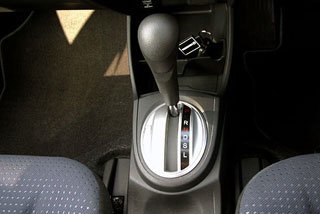 When circumstances are required to move from a place on full gas, the speed set occurs with a greater intensity than the FIT of the previous generation, so that the time for primary dispersal is also required. Of course, it would be strange, if it were not so, taking into account the fact that the new car has a more powerful motor and the hydrotransformer participates in its power transfer. I just want to emphasize: the new Fit runs more freaks than its predecessor.
When circumstances are required to move from a place on full gas, the speed set occurs with a greater intensity than the FIT of the previous generation, so that the time for primary dispersal is also required. Of course, it would be strange, if it were not so, taking into account the fact that the new car has a more powerful motor and the hydrotransformer participates in its power transfer. I just want to emphasize: the new Fit runs more freaks than its predecessor. However, the energetically acting drive is not all. By and large, the price of such energy is worthless if the machine does not have a steering. In this car, everything is just the opposite: at a low and medium speed, the car listens so sensitively to the steering wheel, is so ready to fulfill any of his teams that I will not error against the truth, if I say: among the compact classes, you will meet such controllability infrequently. I’ll say more: in this regard, the new Fit will not yield to many and many models class above. I was especially struck by how easy it was to keep the car on a straight line, and I also pleased its amazing obedience, when at high speed it was necessary to reach the neighboring row. Neither in the first nor in the second case I did not need any excessive efforts: I acted in the literal sense with my fingertips, and this was enough. Thus, the new car was not only more frisky. In addition, it does not require its driver too much costs of his energy, that’s the paradox. In addition, it should be noted that confidence, then calmness that does not leave you all the time while sitting at the wheel. And this directly affects the safety of movement. So personally, with all my hands for a new model!
After all, what is good: despite its high speed potential, a car, no matter what type of road surface is under the wheels, always showed enviable stability, so sometimes I was born confidence that the car is truly capable of realizing any of my plan on the road. The suspension seemed to me not as hard as in a car of the previous generation. She acted calmly and measuredly, in addition, providing reliable contact of the wheels with the surface of the road.
It should be noted that the front wheels of the car are installed in such a way that the axis of their rotation has a very decent angle of longitudinal inclination (caster). Such a slope allows the wheels to successfully fight strikes due to the irregularities of the road. Plus, it was decided to use the longitudinal levers of increased length in the rear suspension (earlier the length was 396 mm, now it has become 435 mm). It is clear that in this case the amplitude of their oscillations decreased, which allowed to use less rigid springs in the suspension. I will name a number of conditions that, to one degree or another, have positively influenced both the stability of the machine and its ability to move in a straight line, not a spray on the sides. Firstly, this is an increase by 50 mm of the wheelbase, and secondly, it is an increase by 20 mm of its full width, which is accompanied by an increase in the track of both the front (35 mm) and the rear (30 mm) wheels.
If you look at the average fuel consumption, it turns out that fuel is spent with greater benefit
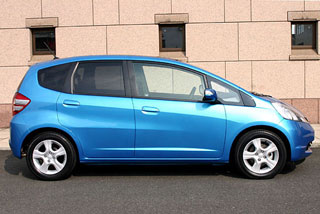 The road noise in the salon of the new car was largely muffled. According to the company representative, the noise level depends on the speed of movement, and it happens that does not exceed 2 decibels. If this is true, I can imagine what it was worth the designers. Moreover, as it turned out, modern sound -absorbing and soundproofing materials are not all. To achieve silence in the cabin, the representative explained, the developers had to think about how to increase the hardness of the body without increasing its mass. Plus, it was necessary to make changes to the fasteners of the rear shock absorbers, as well as strengthen the place of fastening the suspension parts to the body. And one more thing: the size of the huts of the rear longitudinal levers to the body increased by 30 percent, as a result of which the rear suspension stroke, adequate supple levers, changed towards increasing. Here are what measures had to be taken in order to prevent road noise to freely penetrate the salon.
The road noise in the salon of the new car was largely muffled. According to the company representative, the noise level depends on the speed of movement, and it happens that does not exceed 2 decibels. If this is true, I can imagine what it was worth the designers. Moreover, as it turned out, modern sound -absorbing and soundproofing materials are not all. To achieve silence in the cabin, the representative explained, the developers had to think about how to increase the hardness of the body without increasing its mass. Plus, it was necessary to make changes to the fasteners of the rear shock absorbers, as well as strengthen the place of fastening the suspension parts to the body. And one more thing: the size of the huts of the rear longitudinal levers to the body increased by 30 percent, as a result of which the rear suspension stroke, adequate supple levers, changed towards increasing. Here are what measures had to be taken in order to prevent road noise to freely penetrate the salon. As already mentioned, in a new generation car, the engine vibration is almost not felt, and on the other hand, the suspension acts quite satisfactory. And at the same time, I can’t help but notice that when at a certain speed the wheels stumble upon defects in the road surface, sometimes you feel some light return. So, for example, it happened when I followed at a speed of 40 ~ 50 km/h, and under the wheels there was a road joint, which, it seems, was not so large, but the reaction of the car turned out to be too noticeable. I believe that this was due to the fact that the engine is fixed on the back of the back. But on the other hand, such soft pillows were chosen specifically in order to combat vibration, that’s the focus! Well, good, while the car is without a run, this is still wherever it went. But then, apparently, this phenomenon will begin to make itself felt more and more persistently, right? Indeed, not one, so another, and that of these two evils, the designers, apparently, have yet to be decided. By the way, in the new Honda Fit series RS with a 1.5-liter engine, such a return is less noticeable, I believe, because the suspension there is a little more rigid.
On the highway, in order to provide the car with a speed of 100 km/h, the engine holds about 2,000 rpm. Meanwhile, in a first -generation car, in similar cases, the crankshaft rotates about 200 rpm faster. This alone indicates that in terms of economy, the new car is in order. But that's not all. If you let the car accelerate on the descent, monitoring how the speed and speed of the engine are correlated, you can notice that the speed falls very rapidly, disproportionately to speed. In a word, it is clear that the power transmission is configured so that, at any opportunity, allow the engine to switch to low speeds. It is unnecessary to say how much such a setting has a positive effect on the average fuel consumption.
By the way, switching the information display located in front of the driver can be displayed on the scoreboard about the total amount of burned fuel. Usually, on the scoreboard, its instant consumption is visualized. So, perhaps such information support will save a couple of liters of fuel, and he will feel good. But the main thing you are getting behind the wheel, you start moving, and immediately understand: yes, the car is really profitable with good economic indicators and it is profitable to drive it. And from this, too, you see, it can become joyful in the soul.
Is it possible to assume that all the shortcomings noticed before are eliminated?
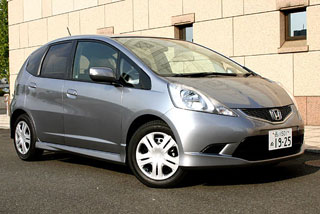 If you evaluate the controllability of the new FIT machine, then I note it, the red -hot suspension affected it, and, of course, the changed geometry of the wheel installation. As a result of the changes in the quality of the machine when moving on the bend, they noticeably changed for the better. In particular, when you start turning, there is no feeling that at first, as if only the front wheels turn on their own, and only then, reluctantly, they follow the body. No, everything is perceived differently: the front wheels are quite naturally pressed on the road, and the body of the car goes further, stumbles on the wheels, unfolds it, and the machine, thus, changes the direction of movement. Moreover, everything happens at a good pace, verified and accurately. You know, I drove along the city streets, then I drove out of town, then went out onto the high -speed highway, and everywhere I felt calm. As a result, I sat behind the wheel for a long time, but almost did not feel fatigue.
If you evaluate the controllability of the new FIT machine, then I note it, the red -hot suspension affected it, and, of course, the changed geometry of the wheel installation. As a result of the changes in the quality of the machine when moving on the bend, they noticeably changed for the better. In particular, when you start turning, there is no feeling that at first, as if only the front wheels turn on their own, and only then, reluctantly, they follow the body. No, everything is perceived differently: the front wheels are quite naturally pressed on the road, and the body of the car goes further, stumbles on the wheels, unfolds it, and the machine, thus, changes the direction of movement. Moreover, everything happens at a good pace, verified and accurately. You know, I drove along the city streets, then I drove out of town, then went out onto the high -speed highway, and everywhere I felt calm. As a result, I sat behind the wheel for a long time, but almost did not feel fatigue. The work of the brake system also did not cause special complaints about me. In particular, if I needed to brake sharply, I pressed the pedal with force, and all, high speed, no matter how it happened. However, as everyone understands when you are one of the participants in the movement, it is desirable to extinguish speed gradually. And here is what I noticed: when you begin to easily press the pedal, the wheels, as expected, are slowed down. But if, then, having waited, crush a little more, the braking force does not increase smoothly, but unexpectedly sharply, and that’s all, the speed is extinguished. And here are what thoughts in connection with this arose. Suppose there is a private problem, for example, inconsistency in the work of the brakes. Of course, you can take and increase the working pitch of the pedal, and then, for sure, it will become easier to control the brakes, and for some time the issue from the agenda will be removed. But you can do otherwise: you look at the brake system as a whole, you look, and it will be possible to make some fundamental changes to it. It is easier, of course, to go in the first way, but it seems to me that if you don’t think about general, then in particular there is little.
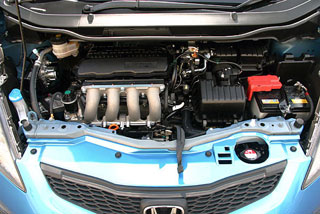 In conclusion, I would like to dwell on this. In the first -generation Honda Fit, I (and not only me) drew attention to a number of moments that, from my point of view, should have worked. So, I decided to understand whether all these shortcomings were eliminated or not. I opened my notes, analyzed them, and identified the main weaknesses of the previous generation car.
In conclusion, I would like to dwell on this. In the first -generation Honda Fit, I (and not only me) drew attention to a number of moments that, from my point of view, should have worked. So, I decided to understand whether all these shortcomings were eliminated or not. I opened my notes, analyzed them, and identified the main weaknesses of the previous generation car. I list: the steering drive amplifier, the shortcomings of which were mainly due to its, so to speak, electric nature (EPS or Electric Power Steering). Further, the brake pedal was badly felt. What else? The rigidity of the suspension, then, is not a quick reaction of the transmission at start. Further, a large speed difference before stopping the car, penetrating into the salon, the noise of the road, a large fuel consumption on a cold engine. And, finally, the unpleasant sound of splashing fuel, coming from the gas tank, whenever the car slowed down (of course, we are talking about cases when the tank turned out to be half empty).
I'll start with the steering. I can say that in this regard, everything was resolved in the most favorable way. Why did I not like the previous amplifier? Firstly, he acted rudely, annoyingly reminding of his, so to speak, mediation between me and controlled wheels. But well, it would be only that! Sometimes it happened that the car is in a straight line, you, focusing on its front, begin to act with a steering wheel to turn a little to the side, and go further before the car than you planned. Ultimately, it was possible to choose the right position, but you yourself understand: it was no longer possible to call this a turn performed by a light movement of the steering wheel. Naturally, the driver had to constantly be on the alert, so that, God forbid, do not take too much to the side. So, I can confirm: now all these problems are left behind.
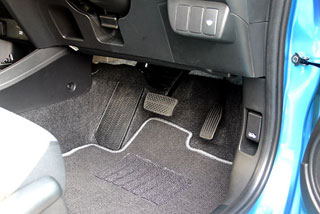 If you believe the company representative, for this I even had to connect specialists from the research center of the company. What, ultimately, was decided to do? No, no, the representative warned in advance, before the installation of an electric motor that did not have collector brushes, it did not reach. To combat inertial phenomena, we have chosen a different path. First of all, we increased the power of the old electric motor from 40 to 60 amperes, revised the transfer steering coefficient (it was 18.3, became 17.7), changed the front wheels caster (was 2.16, became 3.18 degrees) and, accordingly,, accordingly, increased the mark from 5, 4 mm to 18.2 mm. Well, a lot has been done, but the result is also evident.
If you believe the company representative, for this I even had to connect specialists from the research center of the company. What, ultimately, was decided to do? No, no, the representative warned in advance, before the installation of an electric motor that did not have collector brushes, it did not reach. To combat inertial phenomena, we have chosen a different path. First of all, we increased the power of the old electric motor from 40 to 60 amperes, revised the transfer steering coefficient (it was 18.3, became 17.7), changed the front wheels caster (was 2.16, became 3.18 degrees) and, accordingly,, accordingly, increased the mark from 5, 4 mm to 18.2 mm. Well, a lot has been done, but the result is also evident. Now, as for the brake pedal, which was previously poorly felt. It was stated that the engineers had to conjure here, but, ultimately, they increased the shoulder of the pedal, and also reduced the diameter of the piston of the main brake cylinder. In my opinion, the representative of the company concluded, now the subjective sense of control of the brakes has become completely different, at least until we plan any other changes here. Well, I really felt some improvement, although, frankly, she is still far from perfection.
Almost all the shortcomings noticed before, and the running qualities of the car are simply outstanding
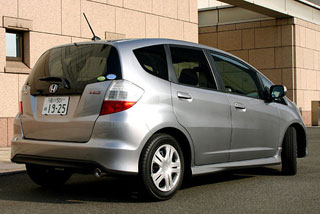 Once again, I remind you what specific changes were made to the chassis when developing a new generation FIT. So, the track of the wheels is increased, the length of the suspension levers and their shoulder has been changed. This led to the fact that the suspension began to act with greater smoothness. It should also be mentioned about an increase in the size of the bushings, through which the suspension levers are attached to the body, as well as a change in the geometry of the installation of the wheels themselves. Well, we must not forget that the so -called road noise became less audible in the cabin, but not only work on improving the suspension elements, but also an increased body rigidity, increased on the improvement of the body, helped to achieve this. And I can confirm: I feel good while driving, all these events did not go in vain for the new car.
Once again, I remind you what specific changes were made to the chassis when developing a new generation FIT. So, the track of the wheels is increased, the length of the suspension levers and their shoulder has been changed. This led to the fact that the suspension began to act with greater smoothness. It should also be mentioned about an increase in the size of the bushings, through which the suspension levers are attached to the body, as well as a change in the geometry of the installation of the wheels themselves. Well, we must not forget that the so -called road noise became less audible in the cabin, but not only work on improving the suspension elements, but also an increased body rigidity, increased on the improvement of the body, helped to achieve this. And I can confirm: I feel good while driving, all these events did not go in vain for the new car. The next paragraph of my list of notes noticed in the old car, the wheels were too slowly picked up by the transmission, and therefore there was a high probability of the car back at the beginning of the movement on the rise. As already mentioned, in order to correct the situation, it was decided in the new car to abandon the starting coupling in favor of the hydrotransformer, as well as to equip the control system with a special sensor with the gallomer. These measures, according to the company representative, allowed the transition to the movement mode not according to a pre -programmed scheme, but, as they say, according to the situation. On the other hand, he continued, in connection with such significant changes made in power transmission, no one will confuse our FIT with other models of this class, isn't it?.
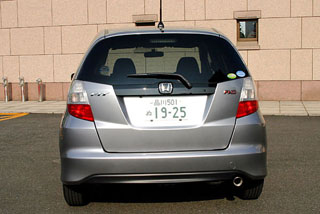 Another drawback that was noted in the Fit machine earlier is a large speed difference that took place immediately before stopping. On this occasion, the company’s representative expressed himself as follows: the fact that the hydrotransformer is now involved in the power transmission does not remove the task of maximum fuel savings from the agenda. That is why when the speed is extinguished, it is important that the fuel cut off lasts as long as possible until the moment preceding the complete stop. So in the new model of the control program, the unavailable transmission is compiled in such a way that the fuel is cut off up to the smallest engine speed. Naturally, at such moments, the motor acts as a rather powerful brake, therefore, when the fuel supply is resumed, and the flashes renew, this cannot but lead to a jerk. But we made so that at the right time the throttle was revealed for a moment (the good that electronics controls everyone), so in the end everything goes more or less smoothly. And this is true: where a jerk was surely followed, nothing of the kind in the new car: it stops smoothly, as if nothing had happened.
Another drawback that was noted in the Fit machine earlier is a large speed difference that took place immediately before stopping. On this occasion, the company’s representative expressed himself as follows: the fact that the hydrotransformer is now involved in the power transmission does not remove the task of maximum fuel savings from the agenda. That is why when the speed is extinguished, it is important that the fuel cut off lasts as long as possible until the moment preceding the complete stop. So in the new model of the control program, the unavailable transmission is compiled in such a way that the fuel is cut off up to the smallest engine speed. Naturally, at such moments, the motor acts as a rather powerful brake, therefore, when the fuel supply is resumed, and the flashes renew, this cannot but lead to a jerk. But we made so that at the right time the throttle was revealed for a moment (the good that electronics controls everyone), so in the end everything goes more or less smoothly. And this is true: where a jerk was surely followed, nothing of the kind in the new car: it stops smoothly, as if nothing had happened. 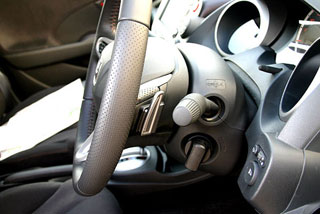 The next point of the list of deficiencies in the old machine is increased fuel consumption on a cold engine. Yes, this is true, the representative of the company noted on this occasion, and not only the money is flying to the wind, the ecology also suffers, because it is clear that if the fuel does not burn completely, then in the exhaust gas, it is full of harmful impurities. And the catalyst is not able to do anything about it, since it is still cold. Well, so we decided to install the first stage catalyst right at the output, and also, so that the heat does not disappear in vain, it was decided to place the exhaust manifold directly on the cylinder head. Well, such a solution seems quite reasonable: not only that the exhaust gas begins faster, so the process of warming the engine itself takes less time. And if so, then, in general, the average fuel consumption decreases, even if instant consumption continues to be increased.
The next point of the list of deficiencies in the old machine is increased fuel consumption on a cold engine. Yes, this is true, the representative of the company noted on this occasion, and not only the money is flying to the wind, the ecology also suffers, because it is clear that if the fuel does not burn completely, then in the exhaust gas, it is full of harmful impurities. And the catalyst is not able to do anything about it, since it is still cold. Well, so we decided to install the first stage catalyst right at the output, and also, so that the heat does not disappear in vain, it was decided to place the exhaust manifold directly on the cylinder head. Well, such a solution seems quite reasonable: not only that the exhaust gas begins faster, so the process of warming the engine itself takes less time. And if so, then, in general, the average fuel consumption decreases, even if instant consumption continues to be increased. And, finally, the last point the sound of the fuel overflowing to the wall in the half -empty gas tank. On this occasion, the following was stated: the tank was made of plastic mass, so it is impossible to put special partitions inside so that they break the wave. Therefore, no matter how we tried, we are not yet able to completely cope with this sound. Well, well, it remains only to reassure itself that this phenomenon arises only from time to time when the tank is completely empty. But if you do not bring it to such a state, and refuel it in time, then there is no negativity. And in the future, I think, the designers will come up with something, for example, they will change the shape of the tank.
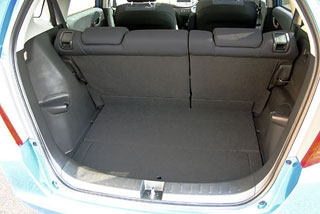
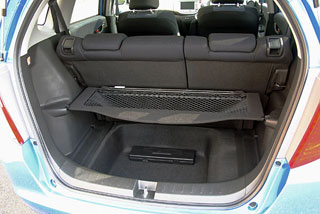
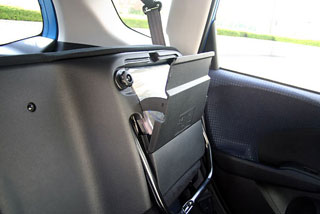
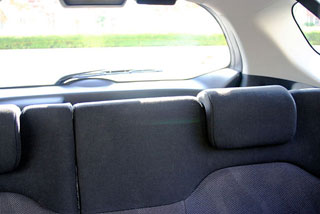
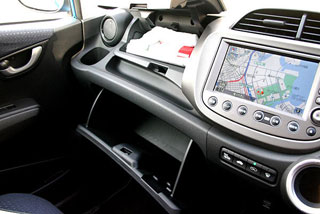
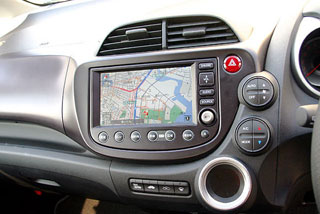
Source: AGN

